#Ancient African tools
Explore tagged Tumblr posts
Text
The Lebombo bone
The Lebombo bone is a bone tool made of a baboon fibula with incised markings discovered in Border Cave in the Lebombo Mountains located between South Africa and Eswatini. According to The Universal Book of Mathematics the Lebombo bone’s 29 notches suggest “it may have been used as a lunar phase counter, in which case African women may have been the first mathematicians, because keeping track of…
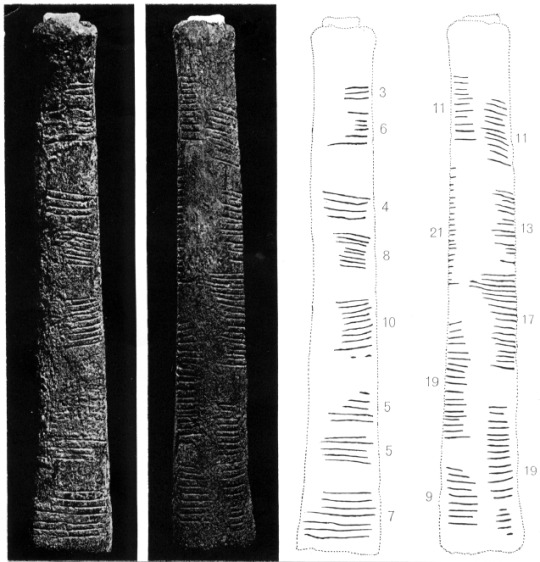
View On WordPress
#African artifact#African History#African tools#Ancient African tools#South Africa history#South African artifacts#The Lebombo bone
0 notes
Photo

Mesolithic Flint Tools – Genuine Stone Age Artefacts from Mauritania, North Africa – Certified Prehistoric Tools – Actual Specimens Shown
This listing offers authentic Mesolithic flint tools from Mauritania, North Africa, dating back to the Middle Stone Age (circa 10,000 to 5,000 BCE). Each piece was expertly chosen for its typological clarity and preservation, showcasing the skilled workmanship of early human toolmakers. These artefacts provide an invaluable glimpse into the daily lives and survival strategies of prehistoric hunter-gatherer communities in the Sahara region.
These tools were shaped from fine-grained local flint using percussion flaking and pressure retouch techniques, common to the Mesolithic period. The artefacts may include blades, scrapers, burins, or points, used for tasks such as butchering animals, woodworking, or hide preparation. Their design reflects evolving tool-making traditions and the increasing sophistication of Mesolithic societies.
This carefully selected tool is shown next to a 1cm scale cube to help demonstrate its true size. It comes with a Certificate of Authenticity confirming its genuine prehistoric origin.
Key Details:
Type: Flint Tool (Scraper / Blade / Point – type may vary per specimen)
Cultural Period: Mesolithic (Middle Stone Age)
Age Estimate: ~10,000 – 5,000 BCE
Material: Flint (chert)
Location Found: Mauritania, North Africa
Condition: Original surface with signs of intentional flaking
Authenticity: 100% Genuine – Certificate of Authenticity included
Photo: The exact specimen shown is the one you will receive
Archaeological & Collector Relevance: Mesolithic tools like these bridge the gap between Paleolithic hunter-gatherer technology and the Neolithic revolution. Their portability, precision, and specific use cases reflect changes in how early humans interacted with their environments. Collectors and educators prize these for their craftsmanship, historical importance, and rarity in well-documented locations such as Mauritania.
All of our Artefacts are 100% Genuine Specimens & come with a Certificate of Authenticity.
Fast & Secure Shipping – Professionally packed to protect your valuable piece of history.
Add a real Stone Age artefact to your collection with this authentic Mesolithic flint tool from Mauritania – a tactile connection to prehistoric innovation.
#Mesolithic flint tools#prehistoric stone tools Mauritania#genuine Mesolithic artefact#African flint tool for sale#ancient hand tools Stone Age#certified Stone Age artefact#Mauritania Mesolithic culture#authentic flint scraper knife#primitive tool relic#archaeological stone tools
0 notes
Text
"One of Yonga's personal favourites in the Frame project is Sona or Tusona, an ancient, sophisticated and now rarely used writing system.
It comes from the Chokwe, Luchazi and Luvale people, who live in the borderlands of Angola, the Democratic Republic of Congo and Yonga's own north-western region of Zambia.
Geometric patterns were made in the sand, on cloth and on people's bodies. Or carved into furniture, wooden masks used in the Makishi ancestral masquerade - and a wooden box used to store tools when people were out hunting.
The patterns and symbols carry mathematical principles, references to the cosmos, messages about nature and the environment - as well as instructions on community life.
The original custodians and teachers of Sona were women - and there are still community elders alive who remember how it works.
They are a huge source of knowledge for Yonga's ongoing corroboration of research done on Sona by scholars like Marcus Matthe and Paulus Gerdes.
"Sona's been one of the most popular social media posts - with people expressing surprise and huge excitement, exclaiming: 'Like, what, what? How is this possible?'"
The Queens in Code: Symbols of Women's Power post includes a photograph of a woman from the Tonga community in southern Zambia.
She has her hands on a mealie grinder, a stone used to grind grain.
Researchers from the Women's History Museum of Zambia discovered during a field trip that the grinding stone was more than just a kitchen tool.
It belonged only to the woman who used it - it was not passed down to her daughters. Instead, it was placed on her grave as a tombstone out of respect for the contribution the woman had made to the community's food security.
"What might look like just a grinding stone is in fact a symbol of women's power," Yonga says."
#history#women in history#women's history#zambia#angola#congo#sona#writing systems#women at work#africa#african history#black history#black women in history
150 notes
·
View notes
Text
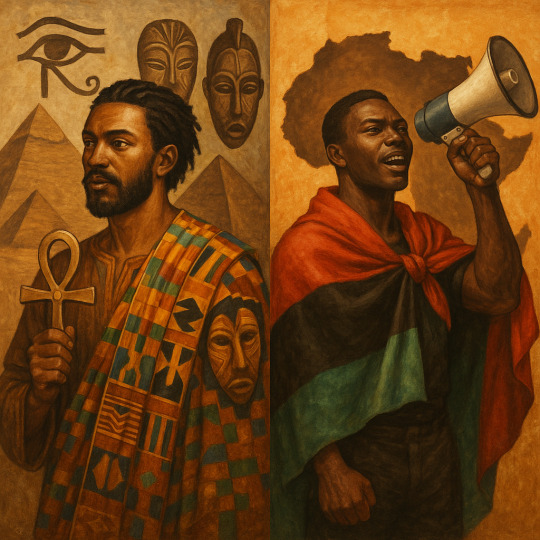
Roots and Routes: The Sharp Divide Between Afrocentrism and Pan-Africanism Through a Garveyite Lens
Introduction:
Too often in today’s discourse, Pan-Africanism and Afrocentrism are used interchangeably. But from a Garveyite perspective—rooted in organization, political power, race-first philosophy, and global Black unity—this conflation is both incorrect and dangerous. While both frameworks attempt to restore dignity to African people, their core philosophies, strategies, and end goals differ profoundly. One is a worldview rooted in aesthetic restoration and cultural reclamation; the other is a revolutionary project of global liberation, nation-building, and self-determination. Let’s draw the line.
1. Definitions: Surface vs Structure
Afrocentrism is primarily an intellectual and cultural movement. It seeks to reframe history, philosophy, and identity from an African-centered perspective. It reclaims ancient African contributions to civilization (Kemet, Nubia, etc.), reinterprets historical narratives, and critiques Eurocentric frameworks in education, religion, and science. Its goal is to mentally decolonize.
Pan-Africanism, especially in its Garveyite form, is a political movement—built on race pride, economic independence, self-reliance, and the unification of all African people under one flag. It calls for African control of African affairs, be it on the continent or in the diaspora. It doesn’t just want to rewrite history—it wants to make history.
Garveyism, the most militant and organized strand of Pan-Africanism, understands this difference and demands more than mental liberation. It demands power—political, economic, and military.
2. Cultural Reconnection vs Political Realignment
Afrocentrism often revolves around symbolic reclamation—names, clothes, spiritual systems, and a sense of identity. It’s about replacing European heroes with African ones, reclaiming ancestral memory, and taking pride in Blackness.
But Pan-Africanism asks: What systems do we control? Who governs our lands? Who owns the resources? It sees cultural pride as a tool, not an endpoint. Garveyites assert: What good is reclaiming a name or deity if we still live under foreign rule, economic dependency, and systemic subjugation?
Afrocentrism may critique oppression. Pan-Africanism strategizes to end it.
3. Individual Liberation vs Collective Nationhood
Afrocentrism often emphasizes personal or group enlightenment—an internal transformation through African-centered knowledge and spirituality. While powerful, this path often lacks organized mass movement or material outcomes.
Garveyite Pan-Africanism is inherently collectivist. It calls for global Black unity—not just in spirit but in institution. Garvey’s UNIA (Universal Negro Improvement Association) built shipping lines, schools, factories, newspapers, and provisional governments. The aim wasn’t just consciousness—but sovereignty.
Afrocentrism may change minds. Pan-Africanism changes conditions.
4. Diaspora Focus vs Global Black Nation
Most Afrocentric discourse is diaspora-centric, particularly African American in tone. Its critiques and solutions are often local, focused on Western systems of education, religion, and media.
Pan-Africanism—Garveyite Pan-Africanism especially—is transnational. It refuses to center the West. It sees Black people in America, the Caribbean, Africa, and Europe as one people with one destiny. Its map is global. Its aim is a worldwide African federation.
Garvey said: “Africa for the Africans, at home and abroad.” Afrocentrism too often forgets the abroad is not just where we are, but where we must unite to return, rebuild, and reign.
5. Militancy and Mass Movement
Garveyism believes Black liberation is a war. It’s not poetic or symbolic—it’s real. It demands discipline, order, strategy, and mass mobilization. The UNIA was a blueprint: uniforms, oaths, ranks, black cross nurses, and political offices. That wasn’t cosplay—it was preparation for sovereignty.
Afrocentrism is rarely militant. It is more academic, introspective, and expressive. There is no Afrocentric equivalent to the UNIA or the Black Star Line. No global organizational machinery. No chain of command. No flag to fight under.
Garveyites know that without structure, you cannot build power.
6. Pitfalls of Afrocentrism: The Garveyite Warning
Myth-making without organizing: Afrocentrism sometimes indulges in unverified or romanticized histories (e.g., everyone being Moors, Israelites, or Pharaohs), which can become distractions.
Individualism over institution: It often produces lectures, not organizations.
Confusion over unity: It can fracture along spiritual lines—Kemetic, Yoruba, Moorish, etc.—while Pan-Africanism aims to unify across these differences for political goals.
Silence on Africa today: Many Afrocentrists romanticize ancient Africa but have little to say about modern Africa’s struggles or Pan-African state-building efforts.
Garveyism stands firm: If it does not build power for African people worldwide—it’s not enough.
Conclusion: The African Race Needs Builders, Not Just Dreamers
Afrocentrism is not the enemy of Pan-Africanism—but it is not the substitute. Culture without sovereignty is performance. Identity without power is vulnerability. Garveyism demands we go beyond aesthetic reconnection and move toward global Black reconstruction.
As Garvey once thundered: “The Black man must build for himself. If others are to live by conquering, then he too must learn to conquer for his survival.”
Let us not be content dressing in Kente while begging for crumbs. Let us organize, unify, and take what is ours.
#GarveyiteTruth PanAfricanismNotJustAesthetic AfricaForTheAfricans RaceFirst NationBeforeNotion#black history#black people#blacktumblr#black tumblr#black#pan africanism#black conscious#africa#black power#black empowering#marcus garvey#garveyism#garveyite#afrocentrism#blog
129 notes
·
View notes
Note
Feel like dropping the rant about how "pre-written records = prehistory" is not a good way of conceptualizing history? It's not my area at all so I'm fascinated.
Hah absolutely
It’s a mix of semantics, and word connotations, and the way history gets presented, and tbh legacies of racism.
So. Part of it comes from the distinctions between the academic field and practice of history, and the academic field and practice of archaeology. The practice of history means analyzing the past through written texts and records; the practice of archaeology means analyzing the past through the material remains left behind. This is fine. It refers to the way you approach information about the past and what tools and theories you use to do so. I have no problem with this part!
Of course, it starts to get more complicated when you also have classicists (who study ancient Greek and Roman history primarily through texts but also incorporate some aspects of archaeology) and Assyriologists (ditto but for Mesopotamia), which have their roots in old-school European practices of formal education. There’s also historical archaeology, which is primarily archaeology but incorporates written records of the time and place for a fuller picture, or uses archaeology to complicate or fill gaps in the records. Historical archaeology is a practice that can be applied to any place and time with historical records, but primarily it refers to archaeology of the Americas post-European colonialism.
These refer to the ways we study the past. Where I start to disagree is when these terms get applied to the past itself.
Historians study history through written texts, so there is often a delineation where history = the presence of written texts, and prehistory = before that. And I have problems with that delineation of time.
For one thing, the connotations of the terms. History, in common use, is important, it’s everything that built the world we live in and led to where we are now. Those who do not learn from history are doomed to repeat it. While prehistory conjures images of dinosaurs, or cavemen. It implies that the things that happened in it aren’t as important as the things that happened once history proper started. It also feels very, very old—it feels weird to call, say, the Inca empire prehistoric, when the Inca Empire is younger than Oxford University and the first Inca emperor was crowned in Peru after the Norman Invasion of England in 1066—something nobody calls prehistoric.
Because that brings up a more objective issue with splitting time into “history” and “prehistory”: writing was invented at different times in different places, and used to different extents. Writing was first invented in Mesopotamia in the Early Bronze Age, about 5,000 years ago. It was probably independently invented in Egypt shortly afterward, and was independently invented in China 3400 years ago, and in Central America about 2500 years ago. Writing spread across Asia, India, North Africa, Europe, and Mexico/Guatemala; it was not used in North America, South America, southern Africa, Australia, most parts of Polynesia, Micronesia, Australia, or New Zealand at all until European contact. According to the written records definition, this means history starts in very different times in these different places. Not only does this unbalance what we think of as “history” a lot, it ends up discounting or minimizing these people’s own ways of reckoning history, making their history start when Europeans arrived.
This is an incredibly dismissive way to consider whole continents’ worth of people and cultures! It turns them into a “people without history,” and implies that whatever they were doing before Europeans (or Chinese, Indians, or North Africans depending on the region, but mostly Europeans) doesn’t really matter to what happened since. If anything happened at all in that “time before history”; a common perspective of both early colonists and modern pop-history in places like the American West or Australia is that the people there have been living the exact same way for thousands of years, unchanging since the Stone Age. Only upon contact with Europeans did anything change and “history” start. This is hugely dismissive of these people’s autonomy and their past. (You’ll notice it’s a lot of people who suffer from racism who are denied the title of “history”!) It’s also just not true.
I’m an archaeologist who studies the US Southwest/Mexican Northwest region; I focus on Arizona and New Mexico in the 1000s–1400s AD. And one of the things that opened my mind so much in studying the US southwest was just how much things changed from decade to decade and century to century in the past, the same way they did anywhere else in history at this time. There was no written history in this part of the world, but what we do have is very precise tree-ring dates. Using tree rings, we can date when this or that building was built down to the precise year. And because it’s a desert, things preserve well for a long time, so we have lots of ancient tree-ring dates. Because of this, we can see how art styles, architectural styles, settlement patterns, family organization, farming practices, religion, politics, and cultural interactions changed over the past four thousand years. And we can see that they did change, and sometimes they changed slowly and sometimes they changed rapidly. People did things. They had new ideas, they formed new political organizations and adopted new religions, they came together and broke apart, they developed new art styles and new technologies, elite lineages controlled the social order until their power fractured, people moved into new places and adapted their old practices to what they found there, or developed new ones… and because of tree-rings and desert preservation, archaeologists can see it in ways we can’t in cooler and wetter environments. This is history. This is people doing things, shaping the physical and social landscape for the centuries that followed.
And of course, Pueblo and Diné and Apache and O’odham people of the Southwest have their own oral histories that overlap with these archaeological studies. This is true in many, many places that did not traditionally use writing. They can’t be discounted just because they weren’t written down.
So to me, history = writing and prehistory = before writing is a false dichotomy that’s unhelpful at best and racist at worst. To me, history starts when people become socially organized enough that they care about what happened before, what happened where, and why it’s important, and what it means. Every culture has history, whether they wrote it down or not. Studying it may not always be suited to the skillset of historians, but that doesn’t mean it’s not history.
83 notes
·
View notes
Text
The audacity of colonial map-makers never ceases to amaze. They dredge a ditch in 1869, slap the label 'Suez Canal' on it, and suddenly declare Egypt - one of Africa's most ancient civilizations - somehow 'not African'? And this imaginary line magically creates a whole new continent called the 'Middle East'? What next - will they claim the Nile originates in Brussels?
This is geographic gaslighting at its finest. Since when does a man-made waterway override 60 million years of continental drift? Since when do British and French imperialists get to redraw African identity with their racist 19th century surveying tools?
Egypt's pyramids stand as Africa's oldest monuments; its people have walked this land for millennia, yet some still parrot colonial cartography as if it were divine truth. The Middle East is and always was northwest Africa - no amount of Eurocentric rebranding changes that. The continent doesn't end where white explorers decided to draw their profitable little shipping lanes.
49 notes
·
View notes
Text
Explain the basic: Oils
Check out Part 1, which explains how to use the things down below. Disclaimer: All the things in this post are based on research and personal experience. As much as I could be a teacher, I suggest you find many resources for knowledge to develop your own experiences. Make sure you research the oils you buy/use because some oils can damage or hurt your skin in a really bad way. as well as some aromatherapy oils that can hurt your pet (if you have one).

Types of oils
Anointing oils — A sacred oil that’s blessed and charged and specially formulated for a specific purpose, usually for people.
Carrier oils — Vegetable and mineral oils that are used to help dilute essential oils that could cause skin irritation.
Condition oils — Anointing or conjure oils used to help relieve or improve someone’s condition.
Conjure oils — A dressing oil from an ancient practice usually African, European, or Native American traditions. Often found in Hoodoo.
Dressing oils — Specially prepared oil applied to spell and ritual objects before using them to sanctify, charge, and prepare them for use.
Essential oils — Volatile, concentrated oils, with the characteristic scent of the plant/flower they are from.
Ritual oils — Oils used to anoint candles, ritual tools, material, furniture, money, and other such items, and then use to anoint the body are often also called anointing oils.

Basic oils and their use:
Basil: Stimulates the mind, used in money-attracting oils, and encourages peace
Benzoin: Increases personal power and awakens the conscious mind
Bergamot: Money and protective rituals
Black Pepper: Protection and promotes courage
Chamomile: Meditation and inducing peace
Camphor: Purification and promoting celibacy
Cardamom: Energy to love and sexually oriented formulas
Cedarwood: Enhances spirituality
Cinnamon: Money and psychic awareness
Clove: Courage and protection
Coriander: Love and healing
Cypress: Blessing, consecration, and protection. Helps ease loss
Eucalyptus: All healing and purification.
Frankincense: Spirituality and meditation
Geranium: Happiness and protection
Ginger: Courage, love, money, and sexuality
Grapefruit: Purification
Jasmine: Love, psychic awareness, peace, spirituality, and sexuality
Juniper: Protection, purification, moon symbolism, and healing
Lavender: Health, love, peace, and consciousness
Lemon: Purification, healing, and lunar use
Lemongrass: Psychic awareness and purification
Lemon verbena: Love
Lime: Purification and protection
Lotus: Spirituality, healing, and meditation
Magnolia: Meditation, love, and psychic awareness
Myrrh: Spirituality, meditation, and healing
Neroli: Happiness and purification
Niaouli: Protection
Oakmoss: Attract money
Orange: Purification
Palma Rosa: Love and healing
Patchouli: Money, sex, and physical energy
Peppermint: Purification
Pine: Purification, protection, money, and healing
Rose: Love, peace, sexual desires, and enhancing beauty
Rosemary: Love and healing
Sandalwood: Spiritualty, meditation, sex, and healing
Tangerine: Sun symbol, power, and strength
Tonka: Money
Vetivert: Money
Yarrow: Love, courage, and psychic awareness
Ylang Ylang: Love, peace, and sex

As always, I will love to hear your thoughts! and if you have any questions, I will be more than happy to answer them! If you liked it, leave a comment or reblog (that is always appreciated!). if you are intrested in more method check the masterlist!
#journal#manifestation#manifestation method#manifesting#shifting methods#manifesation#spiritual development#loa methods#explain the method#explained#essential oils#witchcraft#witchblr#witches#witchcore#witch#witchcraft 101#witchcraft oils#pagan witch#witchy#witchcraft community#witchcraft smp#witchcraft books#witchcraft aesthetic#wicca#teaching witchcraft#teaching#subliminals#affirmation#art
318 notes
·
View notes
Text
Sudan’s National Museum, once the guardian of an invaluable collection of artefacts spanning thousands of years, has been ravaged by looting and severe destruction at the hands of the paramilitary Rapid Support Forces (RSF) [...]
The destruction is a result of a civil war between the RSF and the Sudanese Armed Forces (SAF), ongoing since April 2023, which has killed tens of thousands of people and displaced millions. [...]
“It [the initial damage assessment report] was horrible, really horrible. I am very sad. We are crying,” Ikhlas Abdel Latif, the director of museums at NCAM and the head of its circulating artefacts unit, tells The Art Newspaper from Cairo. “We already knew that the museum would be damaged and looted, but not in the way we have seen in the report from our colleagues who entered the museum.” The initial report, she says, indicates a large portion of the collection—thousands of artefacts—has been taken.
Sudan’s National Museum housed one of the most significant archaeological collections in northern Africa, with artefacts from eras ranging from the distant Stone Age to the Islamic kingdoms, including items from the Funj Sultanate of Sennar (16th to 19th centuries). It presented Sudan’s evolving history via its rulers and religions, with exhibits including medieval Christian frescoes, Kushite statues, entire temple structures and mysterious Meroitic inscriptions.


Before the war, the museum was undergoing rehabilitation, and the collection had been packed in boxes and stored away, Latif says. “The [looters] took the boxes,” she says. The museum’s strongroom was also breached, and its entire archaeological gold collection stolen. Latif says a large storage space containing more 500,000 artefacts from across the country has also been ransacked and damaged. The ground team, she says, saw that some items had been thrown on the ground and crushed underfoot, seemingly as part of a deliberate attempt to destroy them.
“The [RSF] damaged our identity and our history. They want to erase our history and the demographics of Sudan,” she says.
[...] Elabdeen highlights that even the museum’s bioarcheological lab, where ancient human remains were stored and analysed, was not spared, with some mummies “removed from the lab and thrown outside.” In other areas of the museum, containers holding items and tools belonging to foreign missions working with the museum were opened and set on fire, he says.
The devastation left him with a “bitter feeling,” he adds. He references the agony of witnessing the loss of objects that had been accumulated and preserved by generations. “This heritage is irreplaceable, no amount of wealth could bring it back. To witness this loss and be unable to do anything about it is truly painful,” he says.
Latif says the NCAM team is working on a more comprehensive report, which will be circulated at a later date. “We are determined to get our collection back,” she says. She urges the international community not to trade or deal in Sudanese artefacts and to contact the officials if they come across any information about the museum’s collection. “We need the international community to help us rebuild and rehabilitate the museum,” she adds. [...]
[...] The museum held an estimated 100,000 artefacts from thousands of years of the country’s history, including the Nubian kingdom, the Kushite empire and through to the Christian and Islamic eras. It held mummies dating from 2500BC, making them among the oldest and archaeologically most important in the world. [...]


#sudan#cultural heritage#archaeology#archeology#ancient history#history#museum#museums#africa#culture#anthropology#war#art#art history#💬
24 notes
·
View notes
Text
AFRICAN VOODOO
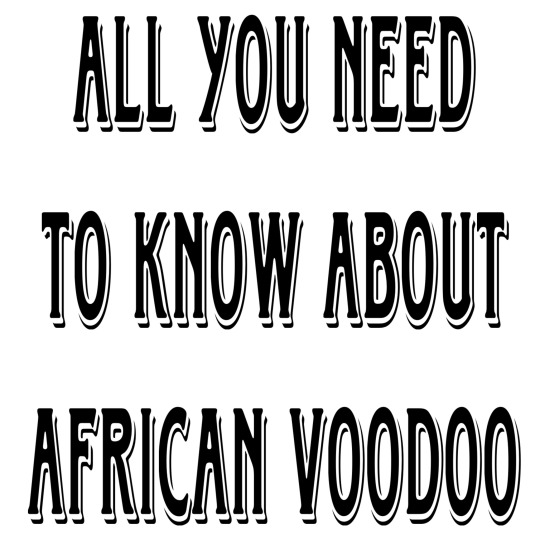
The deep truth about AFRICAN VOODOO
African Voodoo: Unraveling the Mysteries of a Rich Spiritual Tradition
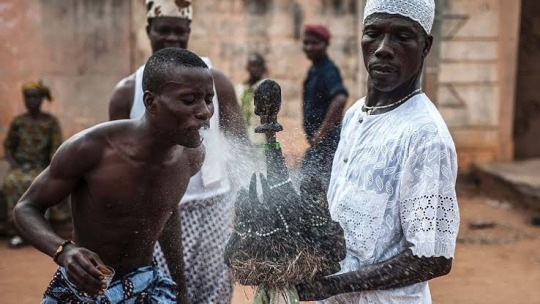
African Voodoo, often shrouded in mystery and misconceptions, is a complex and fascinating spiritual tradition with deep-rooted cultural significance. This ancient belief system, practiced in various forms across the African continent and the African diaspora, offers a unique perspective on the relationship between humans, nature, and the divine. In this article, we will delve into the world of African Voodoo, exploring its history, beliefs, rituals, and its enduring impact on the cultures and societies where it thrives.
A Diverse Tradition
Voodoo, also spelled Vodou or Vodun, is not a monolithic belief system; rather, it is a diverse and adaptable spiritual tradition that has evolved differently in various regions of Africa and beyond. Its origins can be traced back to the indigenous religions of West and Central Africa, where it was practiced by different ethnic groups. Over time, African Voodoo underwent syncretism with Catholicism and indigenous beliefs in the Caribbean, particularly in Haiti, giving birth to Haitian Vodou, which is perhaps the most well-known form of Voodoo.
Core Beliefs
At its core, African Voodoo centers around the veneration of spirits, ancestors, and deities. These spirits are believed to have the power to influence human life and the natural world. Each spirit has a specific domain, and practitioners seek their guidance and assistance through various rituals and offerings. Ancestor worship is a fundamental aspect of Voodoo, as it connects the living to their familial lineage and heritage.
The Loa, or spirits, are a central focus of Voodoo ceremonies. These spirits are intermediaries between humans and the ultimate divine force. Practitioners often enter trance-like states to communicate with the Loa, who possess them temporarily during rituals. The Loa are known for their distinct personalities and preferences, and offerings such as food, drinks, and dance are made to appease and honor them.
Rituals and Practices
Voodoo rituals are colorful and lively events filled with drumming, dancing, singing, and the use of symbolic objects. Rituals are often held in temples or outdoor spaces, and they vary widely depending on the specific tradition and purpose. Some rituals are celebratory, while others are intended to seek protection, healing, or guidance.
One of the most famous Voodoo rituals is the "Voodoo Doll," which is often misunderstood. These dolls are not meant for causing harm but are used as tools for healing or connecting with a specific person's spirit. Pins may be used symbolically to focus intention.
Voodoo in the African Diaspora
The transatlantic slave trade played a significant role in spreading African Voodoo to the Americas, particularly in regions like Haiti, New Orleans, and Brazil. In these places, Voodoo underwent further syncretism with local beliefs and Catholicism, resulting in unique variations of the tradition.
Haitian Vodou, for instance, is a vibrant blend of African Voodoo, Catholicism, and indigenous Taino beliefs. It has had a profound impact on Haitian culture and played a central role in the struggle for independence from colonial rule.
Misconceptions and Stereotypes
African Voodoo has been the subject of many misconceptions and stereotypes, often portrayed negatively in popular culture. These portrayals frequently focus on the more sensational aspects of Voodoo, such as curses and zombies, rather than its rich cultural and spiritual dimensions. It's important to recognize that Voodoo is a legitimate religious practice for millions of people, and like any belief system, it encompasses a wide range of beliefs and practices.
African Voodoo is a complex, multifaceted spiritual tradition with a deep and enduring cultural significance. It is a testament to the resilience of African heritage and the ability of beliefs to adapt and evolve over time. Beyond the stereotypes and misconceptions, Voodoo represents a profound connection between humans, nature, and the divine—a connection that continues to shape the lives and cultures of those who practice it.
Communication with the spirits, often referred to as Loa or Lwa in Voodoo, is a central aspect of Voodoo rituals and practices. Here's an overview of how practitioners communicate with these entities:

1. **Rituals and Offerings**: Voodoo rituals are the primary means of communication with the spirits. Practitioners gather in a designated sacred space, such as a temple or outdoor altar. They often create an elaborate ritual environment with symbols, candles, and ceremonial objects. Offerings, including food, drinks, tobacco, and other items, are presented to specific spirits to gain their favor and attention.
2. **Dance and Music**: Music and dance are essential elements of Voodoo ceremonies. Drumming and chanting create a rhythmic and trance-inducing atmosphere. Through dance and music, practitioners enter altered states of consciousness, allowing them to connect with the spirits more profoundly. It is believed that the spirits may possess individuals during these ceremonies, providing a direct channel for communication.
3. **Possession and Trance**: One of the most distinctive aspects of Voodoo rituals is the concept of spirit possession. Practitioners, often referred to as "servants of the spirits," may enter a trance-like state during which a particular Loa or spirit is believed to take control of their body. In this state, the possessed individual may speak in the voice of the spirit, offering guidance, advice, or requests on behalf of the spirit.
4. **Divination**: Divination is another way to communicate with the spirits in Voodoo. Practitioners may use various divination tools such as tarot cards, cowrie shells, or casting of objects to seek guidance from the spirits. These divination practices help practitioners understand the desires and intentions of the spirits and may provide insights into their own lives.
5. **Prayer and Invocation**: Voodoo practitioners often use prayer and invocation to establish a connection with the spirits. Specific prayers or invocations are recited to call upon a particular spirit's presence and assistance. These prayers are typically passed down through generations and may be spoken in a specific language or dialect.
6. **Voodoo Dolls**: Contrary to popular misconceptions, Voodoo dolls are not used for causing harm but are symbolic tools for communication. They can represent a specific person or spirit and are employed in rituals to convey intentions, requests, or healing energy to the spirits associated with them.
It's important to note that communication with the spirits in Voodoo is a deeply spiritual and cultural practice, and the methods may vary among different Voodoo traditions and communities. Voodoo practitioners believe that these rituals and practices maintain a reciprocal relationship with the spirits, offering offerings and devotion in exchange for protection, guidance, and assistance in various aspects of life.
Masquerades and Voodoo in Africa: A Cultural Tapestry of Spiritual Expression
Africa is a continent rich in cultural diversity, and its spiritual practices are as varied as its landscapes. Among the many vibrant traditions that permeate African culture, masquerades and Voodoo (often spelled Vodun or Vodou) hold significant places in the hearts and lives of its people. This article explores the fascinating intersection of masquerades and Voodoo, shedding light on how these practices are intertwined with African spirituality.
**Masquerades: The Embodiment of Spirits**
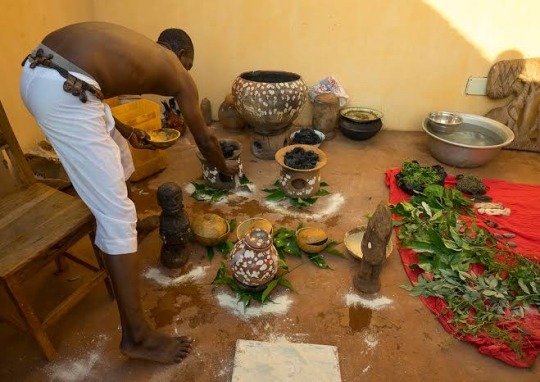
Masquerades are a prominent cultural phenomenon across Africa, characterized by elaborate costumes, masks, and dances. These performances serve multifaceted purposes, including entertainment, social commentary, and spiritual expression. However, it's the latter aspect, the spiritual dimension, that ties masquerades to Voodoo and other indigenous African belief systems.
1. **Role of Ancestors**: In many African cultures, masquerades are a means of connecting with ancestors and spirits of the deceased. The masks and costumes worn by performers often represent these spirits. During masquerade ceremonies, participants believe that the spirits inhabit the masks and interact with the living. This interaction serves as a way to honor and seek guidance from the ancestors.
2. **Protection and Cleansing**: Some masquerades have protective roles in communities. They are believed to ward off evil spirits, illnesses, or other malevolent forces. These masquerades often perform purification rituals, symbolically cleansing the community and its members.
3. **Harvest and Fertility Celebrations**: Masquerades are frequently associated with agricultural and fertility rites. They may perform dances and rituals to ensure a bountiful harvest or to promote fertility among the community members.
4. **Social Order and Governance**: Masquerades also play a role in enforcing social norms and maintaining order within communities. They may act as judges, mediators, or enforcers of communal rules during their performances.
**Voodoo: The Spiritual Heartbeat**
Voodoo, a widely practiced religion across West Africa and its diaspora, is deeply entwined with masquerades and the spiritual fabric of the continent.
1. **Ancestor Worship**: Voodoo places a significant emphasis on ancestor worship, much like masquerades. Practitioners believe that the spirits of ancestors are ever-present and can influence the living. Offerings, rituals, and masquerade performances are ways to honor and seek the guidance of these spirits.
2. **Connection to Nature**: Voodoo, like many African belief systems, recognizes the close relationship between humans and nature. It views natural elements, such as rivers, forests, and animals, as inhabited by spirits. Masquerades often incorporate nature-centric symbolism in their performances.
3. **Trance and Possession**: Both Voodoo and certain masquerades involve altered states of consciousness. In Voodoo, devotees may enter trances and become possessed by spirits, similar to the possession experiences during some masquerade ceremonies. These states facilitate direct communication with the divine.
4. **Rituals and Sacrifices**: Offerings and sacrifices are common in both Voodoo and masquerade traditions. These rituals are believed to appease spirits and seek their favor.
**Cultural Resilience and Transformation**
While masquerades and Voodoo have endured the test of time and colonization, they have also adapted and evolved. In the African diaspora, especially in the Americas, they fused with other cultural elements and religions, giving rise to unique traditions such as Haitian Vodou and New Orleans Voodoo.
masquerades and Voodoo in Africa are vibrant expressions of spirituality, culture, and identity. They are living traditions that continue to shape the lives and beliefs of countless individuals and communities, offering insights into the enduring resilience and adaptability of African cultures in the face of change and adversity.
The timing for Voodoo practices, like many spiritual traditions, can vary depending on the specific tradition, the purpose of the practice, and the preferences of the practitioner. There is no universally "best" time for Voodoo practice, but certain times and occasions are commonly observed:
1. **Festival Days**: Many Voodoo traditions have specific festival days or holidays when practitioners gather to perform rituals and ceremonies. For example, in Haitian Vodou, the Festival of the Ancestors (Fèt Gede) is a significant event where people honor and communicate with their ancestors. These festivals often have fixed dates in the Voodoo calendar.
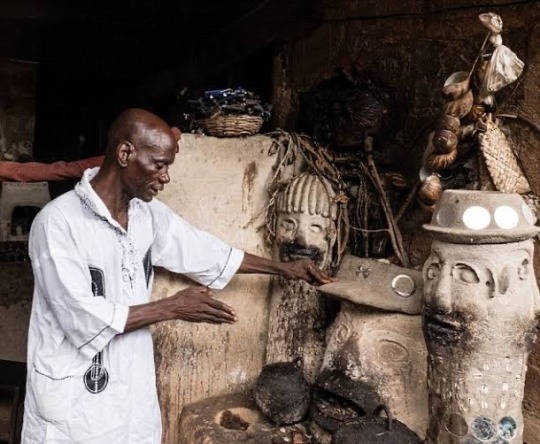
2. **Full Moon and New Moon**: Lunar phases are significant in various spiritual practices, including Voodoo. Some practitioners prefer to conduct rituals during the full moon or new moon, believing that these phases are particularly potent for spiritual work. The full moon is often associated with amplifying energy and intentions, while the new moon is seen as a time for new beginnings.
3. **Nighttime**: Many Voodoo rituals take place during the nighttime. This is believed to be a time when the veil between the spiritual and physical realms is thinner, making it easier to communicate with the spirits. Candlelit ceremonies, drumming, and dancing are common elements of Voodoo rituals conducted at night.
4. **Personal Preference**: Individual practitioners may have their own preferred times for Voodoo practice based on their personal experiences and beliefs. Some may feel a stronger connection to the spirits during specific times of the day or year.
5. **Life Events**: Voodoo is often integrated into various life events such as births, marriages, and funerals. The timing of these rituals is determined by the occurrence of these events.
6. **Consulting a Voodoo Priest/Priestess**: For more specific guidance on the timing of Voodoo practices, consulting a Voodoo priest or priestess is advisable. They can provide insights based on their knowledge and experience within their particular Voodoo tradition.
It's essential to remember that Voodoo is not a monolithic practice; it encompasses various traditions and regional variations, each with its own customs and beliefs. Therefore, the best time for Voodoo practice can differ significantly from one tradition to another. Additionally, Voodoo is deeply rooted in cultural and spiritual contexts, so practitioners often follow the customs passed down through generations within their specific communities.
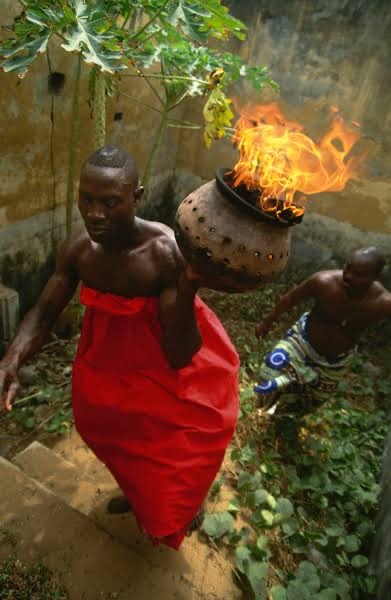
#life#animals#culture#aesthetic#black history#history#blm blacklivesmatter#anime and manga#architecture#black community#heritagesites#culturaltours
270 notes
·
View notes
Text

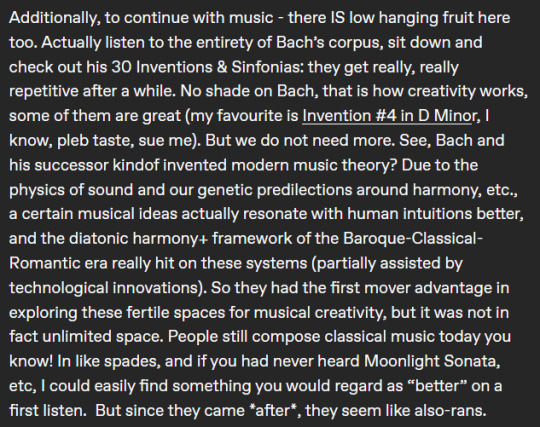
God, it becomes so fucking apparent that these people have no idea what the fuck they're talking about if you have some measure of knowledge beyond the surface level in a topic they've decided to pontificate upon.
What the fuck are you talking about diatonic harmony being best at resonating with human intuition? You only say this because you're a westerner accustomed to music from the common practice period and are used to equal temperament, you'd likely feel much different had you grown up in a culture with a music theory based around different principles. Ancient Greek scales had intervals of varying and irregular size based on tetrachord ratios, traditional Arab music uses a 24-tone system (sometimes 17), Turkish music can use an 18-tone system, some West African systems use very simple pentatonic based melody over multiple polyrhythms You're saying these are inadequate and don't resonate with human intuitions (whatever the fuck this means) and genetic predilections (sounds kinda racist)? Fuck off.
And what about modal music, or music not based on diatonic harmony, you know there are western systems that don't use that. But I bet you're so simple that you don't even know Schoenberg, let alone Milton Babbitt.
And Bach was a late comer, his style was considered "old fashioned" nobody else was still writing four part counterpoint. Okay yes he innovated in the field of modulation because we had only just invented equal temperament.
Genuinely fuck off you absolute tool.
15 notes
·
View notes
Text
Resources for you!
Character Ideas:
Character creation masterpost
Character Alignment Chart
More character alignment descriptions
Muslim Character questions
Characters with magical powers
Building a new character advice
How to create a character for an online or tabletop RPG (also a good guide on creating characters in general)
Royalty/nobility TV Tropes page
Basic character profile
OC masterpost
Random character generators - (1), (2), (3), (4)
D&D Character Building Tool
Character Design Ideas:
How clothing affects a character’s personality
Character Design Inspiration blog
Concept art, fan art, cool art to be inspired by
Character design references and inspiration
Sources for POC character design ideas and models
Create your own character model using HeroForge
For horned characters
Body and hair types guide
Random outfit generator
Naming Help:
Amazing site with an endless amount of naming resources
General advice on avoiding naming appropriation
Hispanic Surnames
Gothic Victorian names
Huge master list for character things in general
Masterlist of names of all types - including but not limited to ancient/old world names, Celtic, African, Northern European, Southern and Central American Native names, Japanese, Chinese, Mongolian, Polynesian, and more
Another name masterlist
How to pick a character name guide
Yet another names masterlist
Creating Background/backstory:
Character Sheet/Development Sheet
Another character development list
In-depth character personality, motivations and traits sheet
320 talents and passions for characters
On writing likes and dislikes that aren’t frivolous
Why you should write non-human characters non-conforming to the gender binary
Stereotypes, tropes, and archetypes
Random backstory generator
Assassin and thief character tropes to avoid
Character Interactions and putting your character into your world/story:
Comparing character height/height references
Characters who are scientists and writing about them doing science
Describing what different voices sound like
Describing skin tones
Writing friendship interactions that are platonic
Why having one character knock their friend unconscious to prevent them from doing something is a bad idea
Advice on shipping OCs with canon characters and what to avoid doing
Sweet Polly Oliver and Sweet on Polly Oliver situations (think of Disney’s Mulan for an example)
How to write multiple viewpoints/juggling a main cast of more than 4 to 6 characters
How to make readers care about your morally gray hero/anti-hero
On platonic OC and canon character relationships
How to avoid Godmodding in RPs
When it’s cheap to kill off a character
Writing dialogue
Things you shouldn’t do to canon characters
Avoiding purple prose in writing and RPs
Slang resources
Dialogue tips
Websites to chart your story/plot/character relationships
Bonus art masterlist!
#writing#character design#original character#dialogue prompt#writing ideas#writers on tumblr#character dialogue#writer#writerscommunity
11 notes
·
View notes
Text
The Killing Time, Unwillingly Mine Chapter 2 Notes
You can read chapter 2 right here! I'd really like it if you did hehe. Without further ado, here are my historical inspirations for this chapter:
Obviously Heimerdinger and Viktor did not invent X-rays. That goes to Wilhelm Conrad Röntgen in the year 1895. I definitely took his story and bastardised it to fit within my fic. The idea that Viktor would invent X-rays grabbed me by my throat and I had to write it. It fits so well into his narrative of being obsessed with the limitations of his body.
Compendium Maleficarum, Malleus Maleficarum, Shams al-Ma’arif, and Picatrix are all real books. The first two were witch-hunting manuals from the 16th and 17th century while the last two were manuals for achieving spiritual magic by using alchemy and astrology and both centred on Arabic magic and are from the 13th and 11th century, respectively.
Now onto the real fun things:
Drugs!
Damn, did the Victorians love their drugs. Here’s some beautiful advertisements for different drugs you could by in pharmacies. They put morphine and cocaine in everything and it was often advertised as for children and to help with coughs as well as toothaches.

Laudanum was a very popular drug/medicine at the time and was a mixture of opium and ethanol. It was used as an all-round painkiller but mostly advertised as for ‘women’s troubles’, as a coughing medicine, and as sleep-inducing medicine for babies and children.

For a lot of Viktor’s more colourful descriptions of being high and justifying his drug use I took inspiration from the autobiographical book Confessions of an English Opium Eater by Thomas de Quincey from the year 1821. De Quincey loooved his opium and admits to taking more than a thousand drops of laudanum in a day. For reference, a recipe for laudanum as a cough mixture calls for 60 drops.

I was very thankful for this website which goes over the tools used and how in regards to smoking opium.
In canon Viktor uses shimmer and blood-magic (when he offers his blood to the hexcore, not sure what else to call it) to “fix” himself so I think I’m not reaching too far when I make him take all kinds of narcotics – that were very popular at the time! Also, in season 1 he was generally very reckless with his own well-being.
For Mel, I was partially inspired by the real-life person Sara Forbes Bonetta, an African woman who became goddaughter to the Queen Vicotria herself. Bonetta became a socialite within British society as did her daughter.
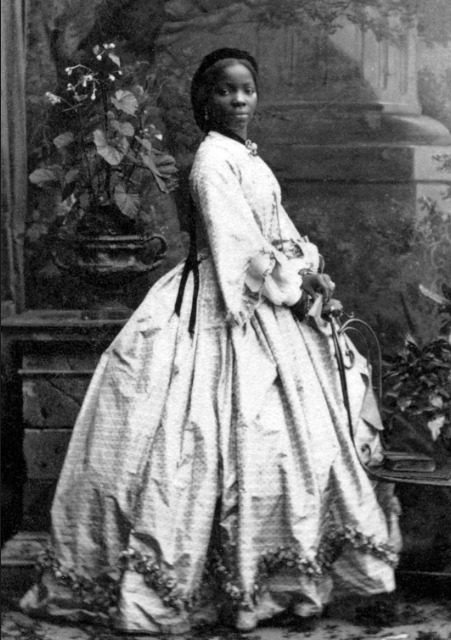
The story of how is quite tragic; Bonetta was enslaved by a rivalling African king and was given as a gift to a British Royal Navy captain, and later became ward to Queen Victoria. I do not like this backstory for Mel at all, so it’s definitely not part of my hc for this fic, but the story of Sara Forbes Bonetta is an interesting example of micro-history.
I also liked the idea that she would wear something that stands out, something artistic. The Künstlerkleid was in starch contrast to the more stiff dresses of most British women at the time. They rejected the heavy materials and constricting designs for more free-flowing, draping materials in softer, brighter colours. I wanted her to be ethereal (because, canonically she just is).
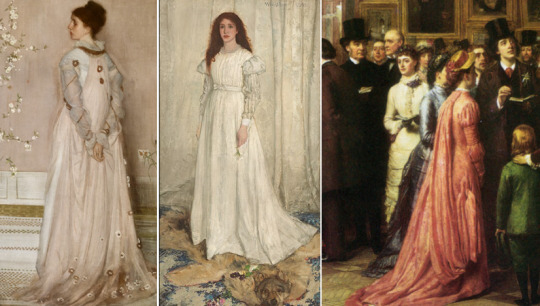
And Victorian women apparently wore open-crotch drawers... do with that what you will.
I put a lot of Greek mythology in this chapter and that is with good reason! Academics in Europe in the 19th century were obssessed with Ancient Greece – the movement was called Philhellenism. It influenced art and poetry and litterature. In the 1870s archeologist Heinrich Schliemann went to modern-day Anatolia in search of the legendary city of Troy. When he uncovered a royal cementary he was sure he had found King Agammenon’s final resting place (he didn’t, as later archeologists have pointed out) and the West was swept up by renewed interest in Greek history.
In the last notes I didn’t go into detail why the group of poets called themselves Uranians. In Greek mythology the gods have several “faces” and functions, and in the case of Aphrodite she had Aphrodite Pandomos and Aphrodite Urania, among others. Pandemos was the goddess of sensual pleasures while Urania was the goddess of love in mind and soul. Gay men in the 19th century took the term Uranian because it was believed that Aphrodite Urania was created from the semen of the god Uranus without a woman involved in the creation. In their opinion Urania was superior because she stood for the connection between minds instead of the “carnal desires of the body”.
Thank you for reading all my ramblings! It's been so fun.
And thank you for reading my fic!
17 notes
·
View notes
Text

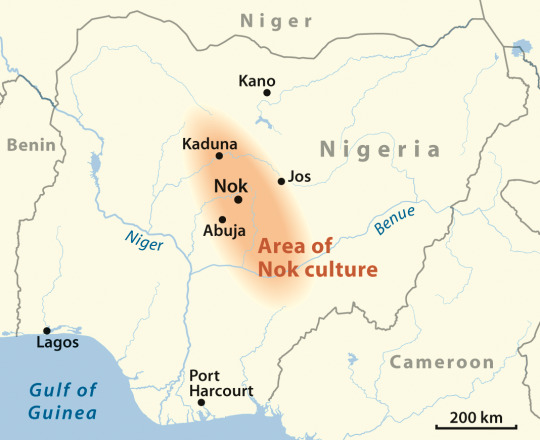
The Nok Culture: An In-Depth Analysis of West Africa’s Earliest Civilization
Introduction: Nok – The Forgotten Pioneers of African Civilization
The Nok Culture (circa 1500 BCE – 500 CE) is one of the oldest known civilizations in West Africa, flourishing in what is now central Nigeria. It is best known for its advanced ironworking, sophisticated terracotta sculptures, and early urban settlements.
Despite its historical importance, Western historians have often ignored or downplayed the Nok Civilization, presenting African history as beginning only with the transatlantic slave trade. From a Garveyite perspective, studying the Nok Culture is essential because it represents:
Black technological innovation – Nok was one of the earliest African societies to master ironworking, fueling later African empires.
Black artistic brilliance – The Nok created highly advanced terracotta sculptures, some of the oldest known in the world.
Black civilization-building – Nok society had urban centers, complex governance, and long-distance trade networks.
By reclaiming the history of the Nok Culture, Black people today can reject the colonial myth that Africa lacked civilization before European contact.
1. The Origins and Geography of the Nok Culture
A. Location and Early Development
The Nok civilization was based in present-day Nigeria, covering areas such as Kogi, Kaduna, and Plateau states.
It thrived for over 2,000 years, making it one of the longest-lasting African cultures before colonial disruption.
The Nok people were part of the Neolithic (New Stone Age) and Iron Age transitions in West Africa, proving early African technological sophistication.
Example: Evidence suggests the Nok may have influenced later West African cultures like the Yoruba, Igbo, and Benin Kingdoms.
Key Takeaway: Africa’s history goes back thousands of years—long before European and Arab involvement in the continent.
2. The Technological Achievements of the Nok People
A. One of the First Ironworking Cultures in the World
Nok is one of the earliest African civilizations to develop iron-smelting technology (possibly as early as 1000 BCE).
Iron tools allowed for advanced farming, hunting, and military defense, helping Nok expand its influence.
This makes Nok one of the oldest ironworking societies in the world, even before many European cultures mastered the technique.
Example: Nok’s ironworking predates European iron production in many areas, proving Africa’s role in early technological advancements.
Key Takeaway: Black civilizations were scientifically and technologically advanced long before colonial contact.
B. The Terracotta Sculptures: Africa’s Oldest Artistic Legacy
The Nok civilization is famous for its intricately detailed terracotta sculptures, among the oldest known in Africa.
The sculptures depict human figures with elaborate hairstyles, jewellery, and expressive facial features, showing a high level of artistic skill.
These sculptures suggest a complex society with social classes, religious rituals, and possibly kings or chiefs.
Example: The Nok terracotta figures influenced later African art styles, including the Benin Bronzes and Ife sculptures.
Key Takeaway: Africa had its own artistic traditions that rivaled those of Ancient Greece, Rome, and China.
3. The Economy and Trade of the Nok Civilization
A. Agriculture and Natural Resource Management
The Nok were advanced farmers, cultivating crops such as millet, sorghum, and yams.
They practiced animal husbandry, domesticating cattle, goats, and sheep.
The Nok developed early irrigation techniques, proving that African civilizations were skilled in water management.
Example: Some Nok settlements show evidence of organized farming villages, meaning they were not just a nomadic society.
Key Takeaway: Africa developed stable agricultural economies long before European colonial rule.
B. Trade Networks Connecting Africa
The Nok were part of a larger African trade network, exchanging iron tools, pottery, and crafts with neighboring cultures.
Their iron weapons and tools may have influenced later West African civilizations such as Ghana, Mali, and Songhai.
They traded with the Sahara region and possibly even early North African and Middle Eastern cultures.
Example: The spread of Nok ironworking technology may have contributed to the rise of later powerful empires like Ghana and Mali.
Key Takeaway: Black economies were self-sufficient and connected through vast trade networks before foreign interference.
4. The Social and Political Structure of the Nok Civilization
A. Social Organization and Governance
Nok society was likely led by chiefs or kings, as suggested by their elaborate sculptures and burial sites.
There was a clear division of labour, with specialized groups for farming, metalworking, and trade.
The existence of large settlements suggests early forms of urbanization, proving that African civilizations built structured cities.
Example: Archaeologists found large Nok settlements with organized streets and buildings, contradicting myths that African societies were all nomadic.
Key Takeaway: African civilizations had complex social structures, organized leadership, and governance systems.
B. Religious and Spiritual Practices
Nok sculptures suggest a strong spiritual and religious culture, possibly honouring ancestors or deities.
The use of symbolic figures in Nok art indicates the presence of rituals, ceremonies, and religious leaders.
Their religion likely influenced later African spiritual systems, including Yoruba Ifa divination and Igbo Odinani.
Example: Many of the artistic symbols in Nok sculptures reappear in later West African religious traditions.
Key Takeaway: Africa had its own spiritual systems that existed independently of foreign religions.
5. The Decline of the Nok Culture: Lessons for Black People Today
A. Why Did the Nok Civilization Disappear?
Around 500 CE, the Nok culture mysteriously declined. Possible reasons include:
Climate change, leading to prolonged droughts and food shortages.
Resource depletion, including deforestation caused by iron smelting.
Migrations and invasions, leading to the rise of new civilizations.
Although the Nok civilization faded, its iron technology, artistic traditions, and social structures influenced later African kingdoms.
Example: The rise of the Yoruba, Igbo, and Benin civilizations may have been influenced by Nok traditions.
Key Takeaway: African civilizations did not just “disappear”—they evolved into new powerful states.
6. The Garveyite Vision: Restoring Africa’s Technological and Cultural Glory
Nok proves that Africa was an advanced technological and artistic power.
Black education must focus on Nok’s history to counter colonial narratives.
Modern African nations must reclaim Nok’s spirit of innovation and self-reliance.
African economies should prioritize local industries, just as Nok controlled its own iron production.
Final Thought: Will We Reclaim Nok’s Legacy?
Marcus Garvey taught:
“The Black skin is not a badge of shame, but rather a glorious symbol of national greatness.”
Will Black people continue to believe that Africa was primitive before colonization?
Will we celebrate our ancestors’ technological brilliance, or allow our history to be erased?
Will we build strong, self-sufficient economies like Nok, or continue to depend on outside forces?
The Choice is Ours. The Time is Now.
#black history#black people#blacktumblr#black tumblr#black#pan africanism#black conscious#africa#black empowering#black power#ReclaimOurHistory#blog#NokCulture#black excellence#garveyism#garveyite#marcus garvey#nigeria
38 notes
·
View notes
Text
Heritage News of the Week
As Saturday was International Woman's Day, here's my favourite archaeologist, Gertrude Caton Thompson, a woman who was ahead of the curve in conducting fieldwork and led an all-female archaeological dig at Great Zimbabwe and proved that it really had been built by Africans (it was 1928, this was still a controversial stance).
My favourite line from the above article: "Caton Thompson claimed to keep hostile letters from local experts in a file marked 'insane'."
Discoveries!
Compelling evidence’ suggests figure is Lady Jane Grey, making it only known depiction made before 1554 execution
Fingers crossed for this!
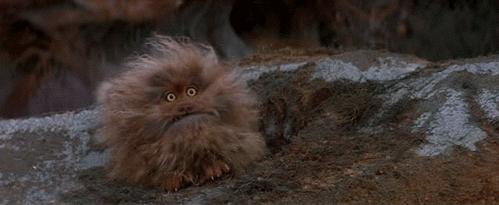
Archaeologists discover cache of ancient gold jewellery in one of Egypt’s most famous temples
A collection of jewellery dating back to the early 26th Dynasty has been found by archaeologists during excavation work in the northwestern part of the Karnak Temple in Luxor, Egypt.

Bayeux Tapestry fragment found in northern German archive
A fragment of the medieval Bayeux Tapestry has been found at the Schleswig-Holstein State archive in northern Germany
Ancient Dorset burial site raises questions over age of Stonehenge
A prehistoric burial site in Dorset is now thought to be the earliest known large circular enclosure in Britain prompting researchers to question whether current dating of Stonehenge may need revising.
Remains of carved canoe may be most significant discovery of its kind, NZ archaeologist says
More than 450 artefacts from a waka found in pieces in the Chatham Islands expected to reveal new insights about Polynesian voyaging.
Scientists realize 'Viking' shipwreck is something else entirely
A 15th-century shipwreck off the coast of Sweden may be Scandinavia's oldest shipwreck built in the innovative "carvel" style — a design that gave it the strength to carry heavy cannons.
Submerged Roman villa emerges in Lake Fusaro
The remains of a Roman village complex have started to emerge from the waters of Lake Fusaro due to a process of geological uplift known as bradysism.
Scientists date remains of an ancient child that resembles both humans and Neanderthals
Scientists have dated the skeleton of an ancient child that caused a stir when it was first discovered because it carries features from both humans and Neanderthals.
Athens’s oldest coins reveal an ancient, widespread silver trade
The internationally sourced metal may have helped a predemocratic tyrant rise to power
Hoard of silver Roman coins found in UK — and some date to reign of Marcus Aurelius
The silver coins were minted over a period of more than 200 years, suggesting that Roman currency at this time was relatively stable.
Rare monolithic menhir discovery near Halberstadt
Archaeologists from the State Office for Monument Preservation and Archaeology of Saxony-Anhalt have discovered a menhir during excavations near Halberstadt in the German state of Saxony-Anhalt.
2,400-year-old puppets with 'dramatic facial expression' discovered atop pyramid in El Salvador
These striking puppets suggest that Indigenous people in what is now El Salvador had rituals that were more connected to the rest of Central American culture than previously thought.
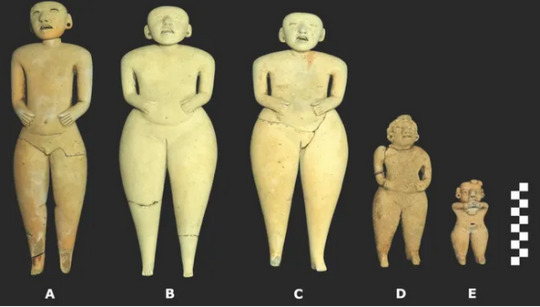
Hermes statue among sculptures discovered in Aspendos excavation
Excavations in ancient Aspendos, part of the “Heritage to the Future” project, have discovered a statue depicting the image of Hermes and fragments of sculptures from the Ancient Greek pantheon of dieties.
1.5 million-year-old bone tools crafted by human ancestors in Tanzania are oldest of their kind
The oldest human-crafted bone tools on record are 1.5 million years old, a finding that suggests our ancestors were much smarter than previously thought.
29,000-year-old remains of child unearthed in Thailand cave with 'symbols of blood and power'
The skeleton of a Stone Age child discovered in Thailand is rewriting what experts know about the prehistory of the area.
Team excavating Sheffield Castle unearth the first surviving examples of 17th-century Civil War abatis in castle moat
The team at Sheffield Castle has uncovered four wooden stakes that shine new light on the tumultuous history and its journey from medieval stronghold and power symbol to slighted ruin.
First Bronze Age settlement in Africa’s Maghreb region discovered
While the historical narrative credits the Phoenicians as the first complex culture to settle the region around 800 BC, excavations at Kach Kouch in northwest Morocco have uncovered evidence of a multi-phase settlement that predates the Phoenician arrival.
Massive Mesopotamian canal network unearthed in Iraq
Researchers have identified an extensive Mesopotamian canal network that supplied ancient farms in the Eridu region with water from the Euphrates river before the first millennium B.C.
Enameled Roman brooch found buried in Scotland
Newly published research by GUARD Archaeology reveals how a rare enamelled Roman brooch provides insight into how the local Britons of south-west Scotland interacted with the Roman army during the late second century AD.

Rock-cut cellars discovered beneath Paderborn’s historic centre
Archaeologists from the Westphalia-Lippe Regional Association have uncovered several cellars and a quarry beneath the historic centre of Paderborn, a city in eastern North Rhine-Westphalia, Germany.
Ancient rock tomb found hidden underneath courtyard of Turkish home
Archaeologists have uncovered a rock tomb in the courtyard of a house in the Şanlıurfa province in southeastern Turkey, a discovery that officials say sheds new light on the region’s ancient history.
Moorish camp where last of the Morisco chiefs was captured identified
A research project led by the University of Granada (UGR) has identified a 16th century Moorish military camp where Abén Aboo, the last of the Morisco chiefs, was captured during the Second Rebellion of the Alpujarras (1568–1571).
A 2,100-year-old marble statue of mother goddess Cybele discovered in Ordu’s ancient Kurul Castle
A breathtaking statue of the Mother Goddess Cybele, dating back 2100 years, was found at the historic Kurul Castle in Ordu, Türkiye. The statue of the mother goddess is remarkable as the first marble statue found as insutu.
Punic necropolis discovered during gas construction works
A Punic necropolis dating to the 4th or 3rd century BC has been discovered during gas construction works in Sestu, a Comune in Sardinia, Italy.
Forgotten copy of Shakespeare’s most famous sonnet unearthed in Oxford library
The extended version of the poem was found hidden in a 17th-century manuscript.
Lost city discovered in historic centre of Nakhon Ratchasima
A research project led by Prof. Dr. Santi Pailoplee from Chulalongkorn University has discovered the traces of a lost city in the historic centre of Nakhon Ratchasima in Northeastern Thailand.
Museums
A long-overlooked marble bust in a small-town museum could be a rare signed work by Donatello, experts claim. The attribution makes the 15th-century sculpture, once mistaken for a 19th-century imitation and even used as a toy by schoolchildren, one of the few works by the Renaissance artist outside of Italy. Its discovery has also raised questions about its preservation.
Workers rally outside Brooklyn Museum as layoffs deadline looms
Over 150 people rallied outside the Brooklyn Museum today, March 6, in the second protest against sweeping layoffs at the institution set to go into effect this Sunday. Forty-seven full- and part-time employees across departments are expected to lose their jobs as part of the museum’s widely criticized cost-saving plan to address a $10 million budget deficit.
Repatriation
This year began with the announcement of another artefact from a UK museum being returned to its country of origin. After detailed provenance research, pointing to the object being looted from a temple in Tamil Nadu in 1957, the Ashmolean Museum in Oxford received permission from the Charity Commission to repatriate the 16th-century bronze statue of Saint Tirumankai Alvar to India. The successful transfer highlights the contradictory state of the restitution debate in Great Britain: on the one hand, a quickening rhythm of returns from university and regional museums and on the other, continued confusion around deaccessioning contested objects from national collections such as the V&A and British Museum. It is going to take a clear, political decision to end what, for national museums, is debilitating stasis.
Australian museum repatriates human remains to Papua New Guinea
Sixteen human skulls were repatriated to Papua New Guinea by the Chau Chak Wing Museum in Sydney, Australia last week.
Brueghel painting stolen from Poland in 1974 found in local Dutch museum
A “spectacular” stolen Flemish masterpiece has been rediscovered hanging on the walls of a provincial Dutch museum thanks to the efforts of an art detective and an antiques magazine.
Art Institute of Chicago returns sacred Buddha statue to Nepal
The sculpture was identified by the online heritage activist group Lost Arts of Nepal as matching one stolen from Kathmandu.
Brazil fights Harvard to reclaim African rebel’s skull after 190 years
The skull’s existence was only revealed in 2022 in a book by historian Christopher DE Willoughby and an article in the Harvard Crimson, which reported that the university holds the human remains of at least 19 individuals who were probably enslaved in the US, the Caribbean and Brazil.
Heritage at risk
Whaling-era graves from the 17th and 18th centuries are being exposed as Svalbard’s permafrost melts due to climate change.
US Defense Department removes war hero images as part of DEI purge
The US Defence Department is erasing from its archives thousands of images of diversity, equity and inclusion to comply with White House orders to end those programmes across federal government.
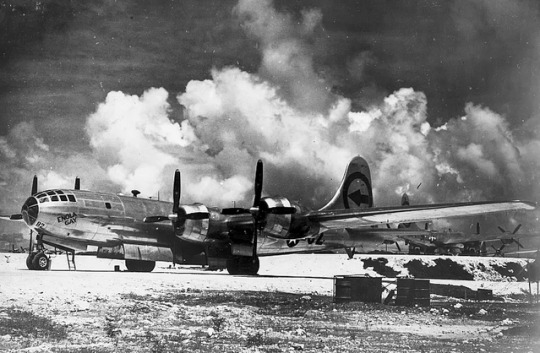
The Enola Gay has been cancelled for being woke
A battle for memory is playing out at Russia's Gulag Museum
A reshuffling at the helm of the Gulag Museum in Moscow has revealed how the Kremlin is creating a new ideologically loyal cadre of cultural managers, some of whom are even receiving military training as part of their advancement.
Historic Montgomery bus station, Freedom Riders Museum part of DOGE-ordered sell-off
An employee at the museum told APR on Wednesday that it wasn’t yet clear whether the building would be sold, and if so, what that meant for the museum, since no one from GSA had contacted the employees either before or after listing the property.
Odds and ends
For over 20 years, archaeologists in India's southern state of Tamil Nadu have been unearthing clues to the region's ancient past. Their digs have uncovered early scripts that rewrite literacy timelines, mapped maritime trade routes connecting India to the world and revealed advanced urban settlements - reinforcing the state's role as a cradle of early civilisation and global commerce. Now they've also uncovered something even older - evidence of what could be the earliest making and use of iron. Present-day Turkey is one of the earliest known regions where iron was mined, extracted and forged on a significant scale around the 13th century BC.
‘People cry, get angry’: remembering the enslaved in Ghana’s remarkable sculpture park
Kwame Akoto-Bamfo started by shaping one clay head in 2009. Now thousands are displayed at the Nykyinkyim Museum, each representing an African who was lost to slavery
St Vincent and the Grenadines buys island central to Garifuna culture
Members of the Garifuna community are celebrating “a historic and long-awaited victory” after the Caribbean nation of St Vincent and the Grenadines announced the purchase of a privately owned island where thousands of their ancestors perished from disease and starvation.
Burial service for remains of 300-year-old sailor
The remains of a man thought to be a shipwrecked sailor from the 18th century have been honoured in Cornwall with a burial.
Remains of US airman identified in WWII-era aircraft wreckage
The Defense POW/MIA Accounting Agency has officially confirmed the identification of 2nd Lt. Robert T. McCollum, who had been missing in action since 1944.
Notre Dame raffles stones to support religious heritage in France
In an effort to raise funds to support France’s endangered religious landmarks and heritage sites, the medieval Catholic cathedral is raffling off around 50 stones from the iconic building. The stones, which were too badly damaged in the fire to reuse, weigh roughly 800 grams each and have been engraved with the silhouette of the iconic structure’s main façade.
Pony-sized dinosaur revealed 52 years after discovery
The fossil of a pony-sized dinosaur has been revealed for the first time - more than 50 years after it was first spotted in a sea cliff on Skye.
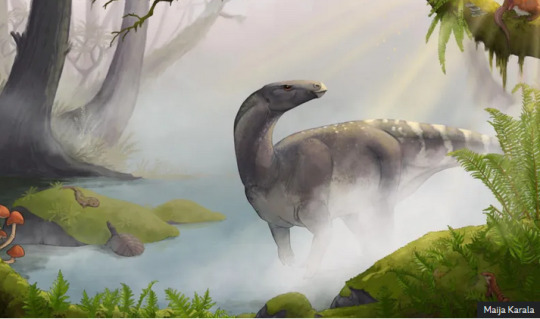
10 notes
·
View notes
Text
Pop Culture Spirits: Muhammad Avdol
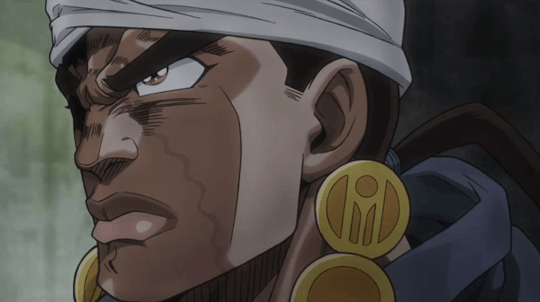
A Quick Introduction: Muhammad Avdol is an old friend of Joseph Joestar, who is a fortune teller, tarot reader, and even an astrologer according to various cited sources (like an interview with Araki, the creator of JoJo’s Bizarre Adventure). Avdol is from Egypt, and possesses a stand called “Magician’s Red” which is a powerful offensive fire type ability that defies physics and logic because it answers to Muhammad’s will alone. Personality wise, he is quite stubborn yet wise, and is talented in predicting the future. Avdol is in his late 20s, but enjoys more mature pastimes and collects books. His favorite color is orange and his favorite food is sushi which is a recommended offering to his spirit as well as chai as a drink offering. (Or Egyptian Licorice Tea).
Correspondences:
Crystals: Carnelian (associated with fire and in ancient Egypt superstition it protects one from the evil eye and was used as a seal), Lapis Lazuli (associated with spirituality and wisdom and the Egyptian concept of Ma’at or “truth” in a modern perspective as well), Sodalite (associated with knowledge and focus), and sunstone (associated with reviving one’s spirit and emboldening one in their demeanor), petrified wood (helps one call on ancient wisdom and draw from deep roots of the past)
Plants: Red or white Egyptian Starclusters (aka “Pentas”, known for their encouragement of harmony and steadfast loyalty), carnations (associated with hope after disaster and sacrifice), African Irises (spiritual and psychic enhancement flowers), and orange roses (passion and confidence with love), acacia (sacred in Egypt), and olive trees (associated with strength and wisdom, grow in Egypt).
Colors: Orange, Red, Gold, and Indigo Blue
Holidays: Muhammad’s birth date is undocumented, but his zodiac sun sign is suspected to be either Aries or Taurus, so I personally dedicate Aries Season to him. It would totally make sense for him to be a fire sign, perhaps with a Sagittarius moon and Taurus rising. But thats all UPG. If you want a more specific holiday to celebrate him, I suggest you delve into the date of his debut appearance in published work. Ways you can honor Avdol during holidays is studying the tarot, drinking chai, and sticking to your values. You can even do intermittent fasting if that resonates and is medically safe.
My Experiences: Avdol is a wise and honest pop culture spirit that showed up in my life in February 2025 (so fairly recently). He has been a great help when I connect to my tarot card practice, and when I feel the fiery spirit within me starting to burn out he gives me strength to push forward, no matter what obstacles are on my path. I think it helps that he has a bit of a unique sense of humor like me, so he doesn’t take everything so seriously. Only the stuff that actually has weight in life does he remain healthily respectful of. I recommend before working with him doing a deep dive into Araki’s interviews about Avdol and get to know him like you would a friend. Also research on Ancient Egypt and kemetic forms of mysticism are good too as long as you’re respectful.
Offerings:
Foods: Dates, figs, almonds (especially roasted salted or seasoned ones), sushi, chai, Egyptian licorice tea (i use yogi brand), strong coffee with a SMALL bit of cream and cinnamon, I’ve found he also likes Moroccan food for some reason so try that too if you wanna shake things up.
Items: Ethically sourced feathers, or fake feathers (red or orange ones are extra good), jewelry like ankhs, scarab symbols or carved figures of scarabs, tarot decks, star charts, and scrying tools. Art (anything that ignites your willpower and passion that you think he will like).
Acts: Researching tarot and its origins and symbols, reading the Egyptian Book Of The Dead, Studying the meaning behind the Ankh, lighting a candle every day in his honor, manifesting (the magician tarot card is all about bring the thought into a tangible form of reality through manifestation and willpower), reading topics that interest you to him, trying new magical spell types, veiling using a headband to ward off the evil eye, and doing a deep dive into your birth chart or astrology in general.
CLOSING THOUGHTS:
If you’ve read this far, first of all TYSM for reading. This is a lot of UPG, so always follow your own intuition as well as the source material if that resonates. And yes, I frickin love Muhammad Avdol. If you dont, FIGHT ME. Hehe :)
#pop culture paganism#witchblr#pagan witch#pop culture pagan#pc paganism#pc witchcraft#witch community#pop culture witch#witchcraft#muhammad avdol#JJBA witchcraft#jjba pagan#jjba part 3 guide#Avdol spirit
12 notes
·
View notes
Text
Literal First Tumblr Post, baybee
So, I saw a post on Bluesky, and it was so awful I made an entire ass Tumblr blog to talk about it.
The post shows a screenshot from an ad for an AI service. To save you all the trouble of going to a whole-ass other website, I'll transcribe the relevant bits of text from the ad, here:
"A.I. isn't just another tool - It will redefine how our world works. Why memorize facts, write code, research anything - when a model can do it in seconds? The best communicator, the best analyst, the best problem solver - is now the one that knows how to ask the right question. The future won't reward effort. It will reward leverage."
This is... wrong. And bad. The corners of the internet I frequent hate every bit of this sentiment, and so do I. The problem is, the place where my brain went is so ridiculously arcane I cannot possibly convey it in anything resembling 300 characters. So, I'm talking about it here.
Let me tell you a story about scurvy.
Part One: Scurvy and the "Scientists" who Rejected it
In the early days of the age of sail, there were a lot of things that doomed voyages. Storms, pirates, mutiny, those fucked up looking dragons everyone drew in the margins of the maps... sailing was a dangerous business. But among the many, many threats to long voyages was a new disease that seemed to exclusively affect sailors.
Scurvy is a specific form of malnutrition, caused by a prolonged deficiency in Vitamin C intake. It could happen to basically anybody who didn't eat enough fruits and vegetables, but the reason it happened to sailors had entirely to do with failures in logistics. Produce did not keep well, in an era before refrigeration, and alternative methods of preserving such things usually destroyed much of the nutritional value they held. Of course, sailors did not know that. Nobody did. Up until this point in history, there had never been reason to think that people could get sick from only ever eating hardtack every day.
In this time period, science wasn't exactly the same as it is today. Most scholars and doctors of the time were little more than nerds with large and expensive libraries. The prevailing attitude at the time was that learned men should defer to those who came before, that the oldest sources of knowledge were the purest and the closest to God, and therefore the most likely to be correct.
In that vein, your average doctor in the Age of Sail was likely to be some manner of adherent to humor theory. Humor theory was a whole rigamarole invented by Greek physicians that said that every malady in the body was due to a failure to keep your various fluids topped up. Citing the "learned sages" of ages past, doctors confidently proclaimed that this new disease was the result of an imbalance of blood, a torpor that could only be cured by increasing the afflicted's workload. Given that scurvy causes a person's body to slowly disintegrate on the connective tissue level, you can imagine how well that went.
Of course, science was being done. Several people were conducting early experiments, gathering testimony from sailors. Slowly, the idea was being introduced in academic circles that the cause was based in the poor diet of sailors, not a humor imbalance. Still, for years, the community at large clung to their old theories. After all, the Greek sages never said anything about fruits and vegetables as the cause, so why should that even be considered?
What those Age of Sail scholars failed to take into consideration was that the ancient Greeks had never encountered scurvy. At least, not to any extent that mattered. The Greeks lived on an archipelago and never strayed too far from shore. Not compared to the globe-spanning trade empires of the Old World. The first possible mention of scurvy wasn't until Roman times, when brief mention was made of soldier illness during long marches through the relatively barren African countryside. The world, by and large, had just never experienced the problem on this scale, because the world had never had to coordinate logistics on this scale, before.
This post is about A.I. tools.
Part Two: Digital Scurvy
Going back to that advertisement mentioned in the Bluesky post, the feeling that I got from it was very much that of the 16th century doctor. It seeks to push forward the idea that all the answers to every question you could have have already been found. Your job as a "learned sage" in our modern times is not to do research or to inquire or experiment. Your job is to efficiently parrot the knowledge of those that came before, to be the best at drawing forth the wisdom of your forebears.
"The greatest analyst," it says, "is one who knows how to ask the right questions." What is meant by that is not "asking questions in service to independent research." Instead, they mean "asking an AI chatbot the questions most likely to get it to pull the relevant information from its impossibly large database." It is a man in a library who has never gone to sea, but who has just the right Greek physician on hand who can explain humor theory to you.
Because this is the problem: what happens when the ancient sages are wrong? What if their information is faulty, outdated, or rooted in outmoded thinking? What if you try to ask the database the answer to a question it has never been asked, before?
What do you do when the new scurvy arises?
Part Three: The Reality
The vision, as promised, just can't happen. The whole of humanity cannot return to a backward-looking way of thinking, any more than the world's doctors could return to humor theory. Information will still need to be synthesized. Not just recited, not just regurgitated, but actually made, whole cloth.
If the world imagined by AI startups has any chance of not imploding on itself, then the end result will be a world of systematized stolen valor. Writers will still feel the pull to tell stories. Scientists will still perform experiments and research. Artists will still create and experiment and discover new philosophies in art.
The only thing that will change is that they will do so with the understanding that they will never be credited.
Somehow, someway, all their output will find its way into the databases. There, it will be snatched up by the "digital sages," who will proudly hold up their prize as one holds up a magnificent pearl, dredged from the sea floor. They will be lauded for their ability to navigate the databases, to petition the gods in just the right way as to earn their favor.
Meanwhile, the synthesizers will continue their work, forgotten.
Part Four: The Less Fun Reality
The true reality of this world would likely be even more bleak.
Creatives all over the world quickly learn to pull their content from electronic sources. Money is hard to earn for people in the arts, and having to share space with a machine that can spit their own output back at them at a quantity beyond mortal means makes the process less than impossible. What few artists remain successful do so in controlled venues. All viewings are in-person, and recording is tightly monitored. Physical media comes back into fashion, loaded down with any subtle measures the artists can think of to foil scans.
Science, meanwhile, grinds to a halt. Funding has long since been diverted to the sages. The credits on scientific papers, once considered a prestige and an honor, now becomes nothing more than a hollow gesture of ownership known only to a select few in an ever dwindling community. What few researchers hang on do so out of bloody-minded desire to change the world for the better. Their efforts are anemic and without support.
The sages, ensconced in their server farms, see none of this. Secure in their positions as the wisest and most powerful, they assert themselves as the ones with the answers to all of life's questions. The databases become filled with the wisdom of the sages that came before, information synthesized semi-randomly from past information. Soon the life of a digital sage is to quote the lessons imparted by other digital sages, in an endless Ouroboros.
The people do not question the sages, for the sages know how to ask the right questions.
And then, one day, when humanity has charted the stars, a new problem arises. Astronauts on the extremely long voyages in space are suffering from a new affliction, one that has never been encountered, before. Dutifully, the people turn to the sages. Dutifully, the sages make their pleas to the databases.
The databases speak.
"This new affliction is caused by a lack of Vitamin C."
6 notes
·
View notes